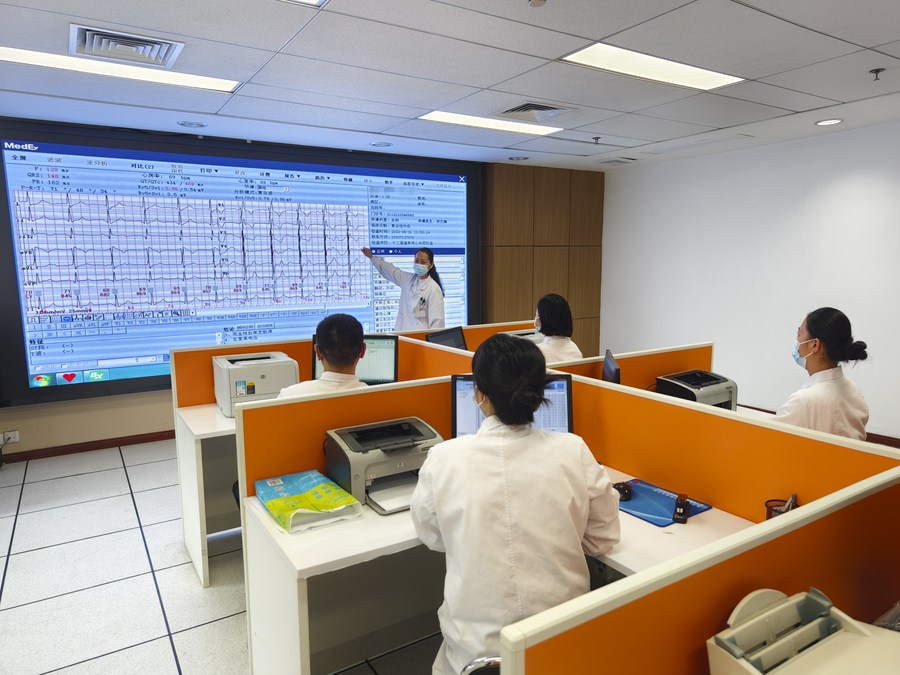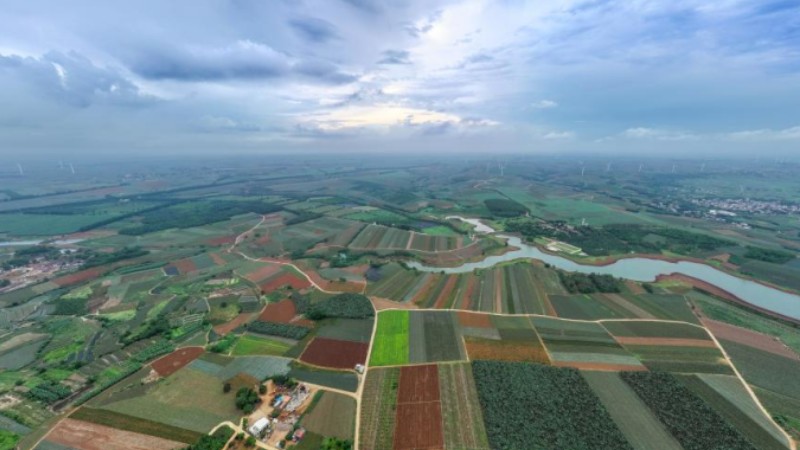Remote medical services benefit more suburban, rural residents

Doctors discuss the condition of a patient in an electrocardiogram remote diagnosis center of the First People's Hospital of Jianghan District in Wuhan, central China's Hubei Province, May 26, 2023. (Xinhua/Yu Pei)
WUHAN, June 1 (Xinhua) -- In April, Qin Qicheng suddenly felt something wrong with his chest. He went to the nearest healthcare center for an electrocardiographic examination. The test results were sent to a higher-level hospital, where a doctor promptly reviewed his situation and gave a diagnosis within minutes.
The 72-year-old resident in Jiangxia District, a suburb of Wuhan City, capital of central China's Hubei Province, was diagnosed with an acute anterior myocardial infarction. The higher-level hospital wasted no time in responding to the situation.
Just two minutes after receiving the results, the higher-level hospital guided the healthcare center to launch a fast track for Qin, and dispatched an ambulance to transfer him to the higher-level hospital for a coronary artery bypass surgery.
From the moment Qin first felt uncomfortable to his arrival at the higher-level hospital, the whole process took a mere hour and a half.
China has made significant strides in improving medical services, and it has relocated more resources to grassroots health institutions over the past few years, including advanced medical facilities. This has resulted in more equitable access to medical services for the general public.
However, grassroots health institutions in the vast suburban and rural areas, especially those in the remote regions, still face challenges such as a shortage of radiologic technologists and cardiac electrophysiologists. These limitations restrict the diagnostic capabilities of medical institutions at the grassroots level.
Thanks to the rapid development of internet technology, many large medical hospitals in Wuhan have launched remote medical services, bringing advanced diagnostic techniques to grassroots healthcare institutions.
An increasing number of suburban and rural residents have benefited from the approach. They can now receive health examinations and basic treatment at nearby grassroots health institutions and obtain authoritative diagnoses from higher-level hospitals through remote diagnosis services.
"The service is provided free of charge to the residents, aiming to provide them easier and more convenient medical services," said Zhang Chunhong, an official of the health bureau of Jiangxia District.
The diagnosis issued by experts from higher-level hospitals can increase patients' confidence, and meanwhile, it is a method to allocate high-quality medical resources to the primary level health institutions, Zhang added.
Taking the traditional Chinese medicine of Jiangxia District as an example, more than 320,000 pieces of Digital Radiography and Computed Tomography images have been remotely reviewed since the hospital launched remote image diagnosis in December 2016.
In 2021, a remote medical center was jointly established by 20 medical institutions in Wuhan, which provided more than 200,000 remote medical services in 2022, according to the municipal health commission.
Photos
Related Stories
- China establishes 13 specialized national medical centers
- China's quality medical resources now more evenly distributed: NHC
- China more resolute to fight rare diseases
- Feature: Chinese moms share stories of daughters battling rare Rett syndrome
- Yearender: China strives to improve people's well-being, raise quality of life
Copyright © 2023 People's Daily Online. All Rights Reserved.









